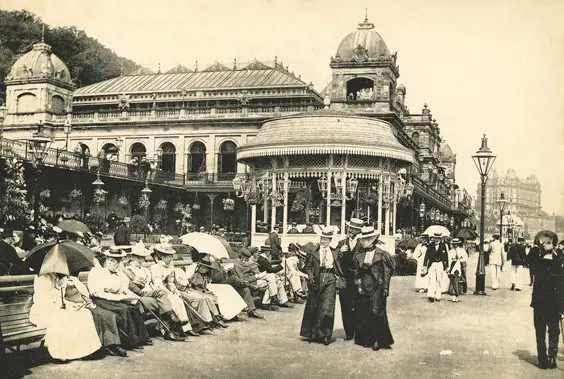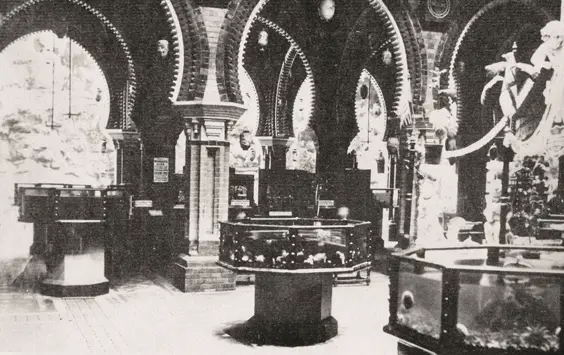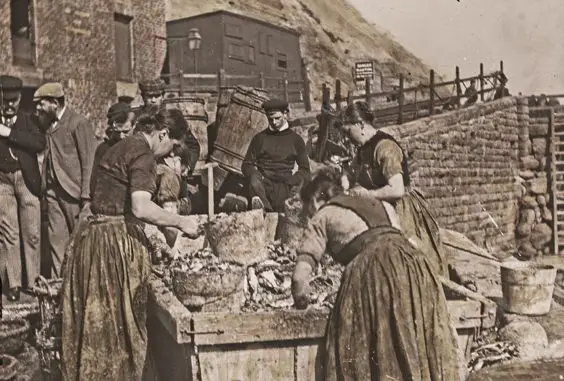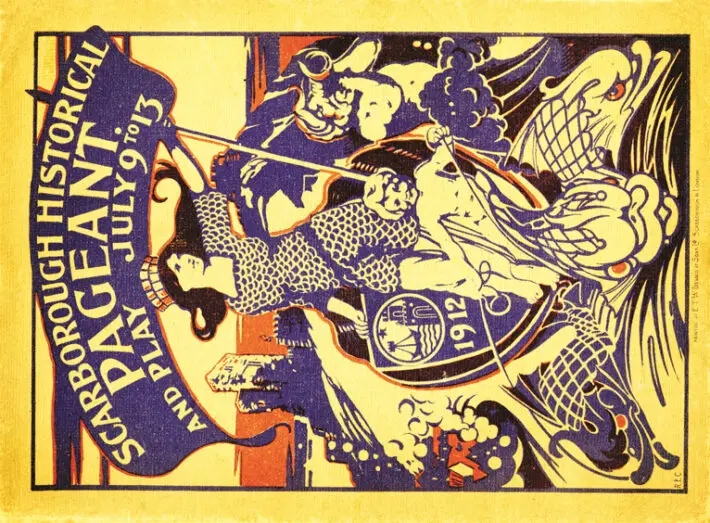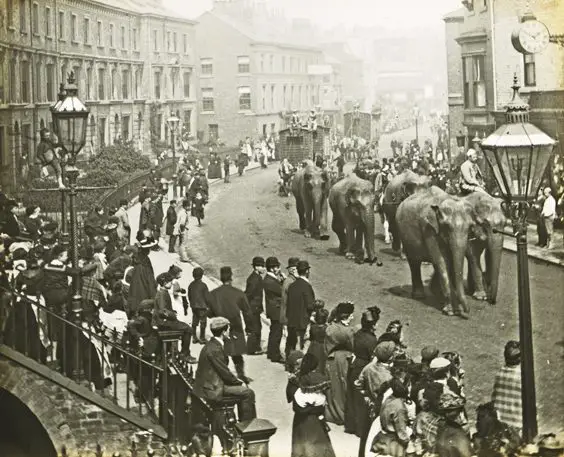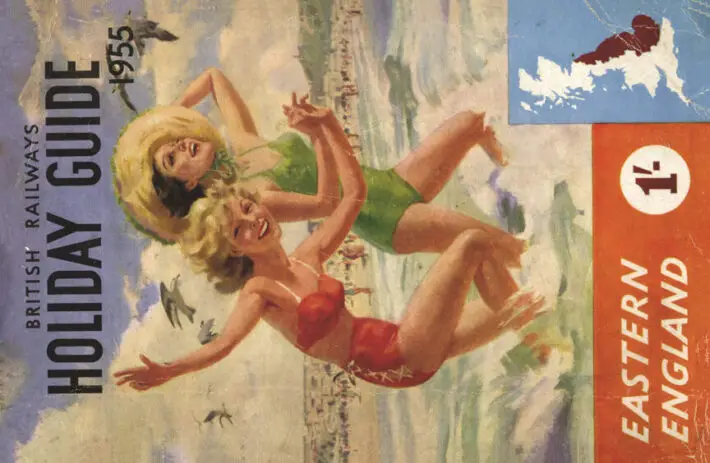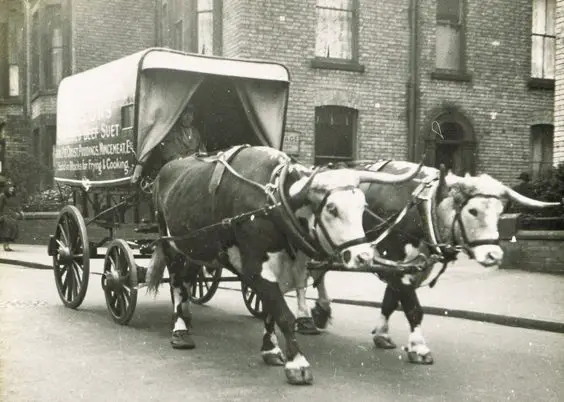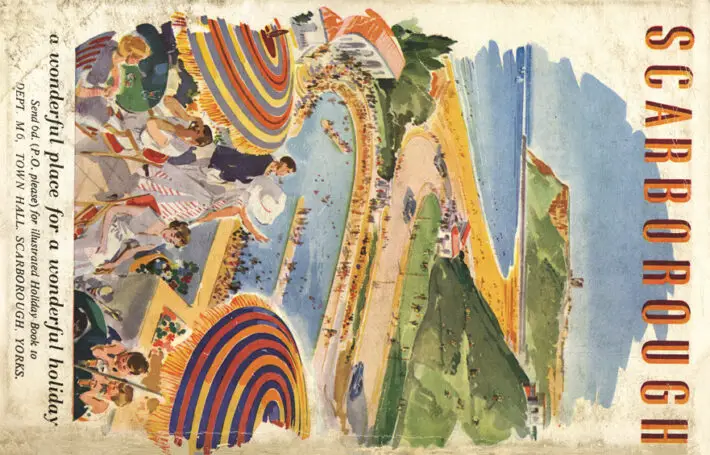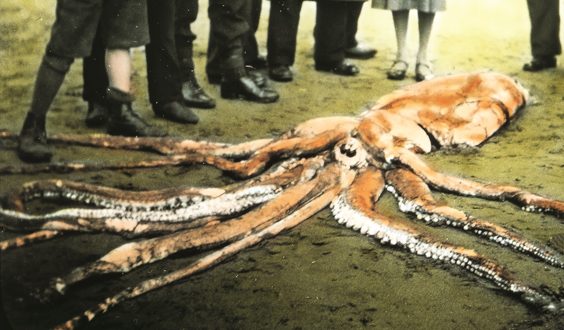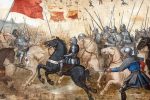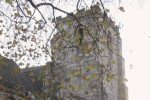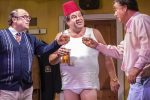Historic Scarborough in Old Photographs
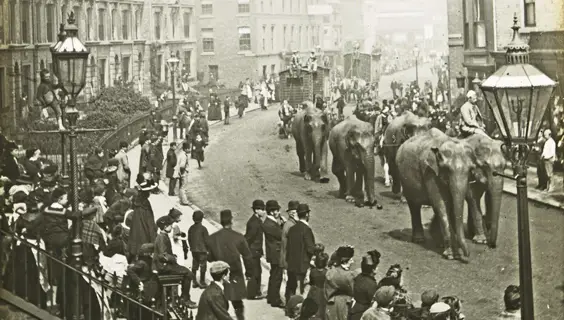
Famous as a seaside holiday resort, Scarborough was believed to have been established by Norsemen around AD 966. The town and its castle changed hands seven times between Royalists and Parliamentarians during the English Civil War of the 1640s, enduring two lengthy and violent sieges. Following this war, much of the town lay in ruins. In the seventeenth century the discovery of a stream of acidic water running from one of the cliffs to the south of the town gave birth to Scarborough Spa and soon visitors flooded to the town. Scarborough Spa became Britain’s first seaside resort and a popular getaway destination for the wealthy of London. The coming of the Scarborough-York railway in 1845 increased the tide of visitors and in the same year Scarborough’s first hotel, the Crown, was opened, followed shortly after by the Grand Hotel, soon to be Europe’s largest.
In a fascinating collection of images, local author Robin Lidster shows Scarborough’s history, from its Victorian heyday as a major spa resort through its continued popularity as one of Britain’s main domestic holiday destinations. Scarborough: From Old Photographs provides something for everyone, be they long-time residents or first-time visitors. Here are a collection of images from the book.
Scarborough Spa
A mineral water spring was discovered in Scarborough by a Mrs Farrer in 1826. She drank some of the water and found it health-giving, and so the Spaw (as it was then called) came into being. Two hundred years later a company was formed to develop the site. This included improved access by the Cliff (or Spa) Bridge that opened in 1827. The present Spa Grand Hall buildings were erected in 1879. The bandstand and Sun Court were added early in the last century and the Spa became the property of Scarborough Corporation in 1952. Ladies in their finery enjoyed strolling along the Spa promenade, while others, seated, no doubt discuss the latest fashions as the musicians in the bandstand serenade them with the latest popular tunes.
The Aquarium
The People’s Palace and Aquarium was opened in 1877 and provided a comprehensive variety of entertainments in a weatherproof venue. Eugenius Birch was the architect responsible for the design of the building. He was also involved in the Scarborough & Whitby Railway at the same time, which was built from 1872 to 1885. He was also responsible for the design of the North Bay Pier. Scarborough Corporation took over the complex in 1925 and renamed it Gala Land, but with ongoing financial difficulties it closed in 1966 and was demolished in 1968. The building covered an area of around 2¼ acres and could accommodate 5,000 people. The interior design was based on Hindu temples and Indian architecture. The Moorish arches and tiled walls presented a very exotic appearance to the Victorian public. Octagonal fish tanks can be seen in this picture, which contained freshwater fish and marine creatures – a sea urchin appears to be making a bid to escape out of the nearest tank! There was also a large aquarium holding over 75,000 gallons of water that was also used for swimming displays. Captain Webb, the first man to swim the English Channel unassisted, came here in 1880. The building also housed a ballroom, fernery, concert hall, reading room, restaurant and bar, shooting gallery, monkey house and a working model of Niagara Falls.
Herring Girls
Herring girls, or Scotch fisher lasses, had a very hard life as they followed the herring fishing fleets down the coast. Their jobs were gipping (gutting) and packing (filling the barrels with layers of salt (or ice) and herring. They were very fast and it is said that some could gip fifty herring in a minute. Each barrel held around 1,000 fish.
The 1912 Pageant
The pageant of 1912 was held in the castle yard from 9–13 July. The purpose of the pageant was to present episodes in the history of the town in the place that had stood over it for so many centuries. In the introduction to the pageant, H. D. Rowntree, secretary of the Book Committee, summed it up: ‘And for you who are here on this historic ground, may you catch some echo of the life of the past, and renew in the sunlight of the two bays beside this Hill that sound health, which, like the [Roman] beacon of old, will rouse in you enthusiasm and strength to achieve any work for the welfare of the nation, to which you may put your hand.’ In some ways, this speech anticipated the struggles that were to come only two years later with the outbreak of the First World War.
Circus Elephants
The photograph was taken on Castle Road, but the event or occasion is uncertain. It is from a series of around nine magic lantern slides all taken on the same day. This may be the end of the procession as a large crowd has gathered in the road. It could be assumed that the circus has just arrived – they often paraded around town to advertise their shows. Note the clock (top right) that was on I’Anson’s Pawnbroker’s shop on the corner of North Street. One small boy has found an ideal position to watch the elephants go by – perched near the top of the lamp post on the left.
Holiday Guide
The British Railways Holiday Guide for 1955 has an interesting cover that depicts a happy scene on the South Bay Beach. The original artwork was reproduced as a full-sized Quad Royal poster in 1940. Some very subtle changes were made to the image as reproduced on the cover – including the ‘all-in-one’ red swimming costume that has been transformed into a bikini – reflecting the post-war scene and changing fashions.
Advertising Carts
On the corner of Victoria Road and Mill Street, this amazing sight must have attracted a considerable amount of attention as it rumbled through the streets of Scarborough, advertising ‘Shredded Beef Suet, for Piecrust Puddings, Mincemeat etc., Sold in Blocks for Frying & Cooking’ – thankfully the beasts could not read.
Scarborough Corporation Guide
The front cover of a Scarborough Corporation guide depicts the North Bay, the open-air swimming pool and the castle headland. Another guide – from 1938/9 – gave some statistics for the North Bay Pool: dressing accommodation for 800 bathers and seating for 700 spectators; the charges for adults was 6d (2½p) and 3d for children; and hire of swimming costume was 3d and towels were 2d.
Giant Squid
The giant squid was washed ashore at Scarborough on 14 January 1933. It measured 17 feet 5 inches (5.5 metres) long and was found to be the largest squid ever to have been recorded around the shores of Britain. One of its two eyes is visible, and is wider than a man’s shoe.
‘Scarborough From Old Photographs’ by Robin Lidster is published by Amberley Publishing, £14.99 paperback, ISBN: 9781445672922
